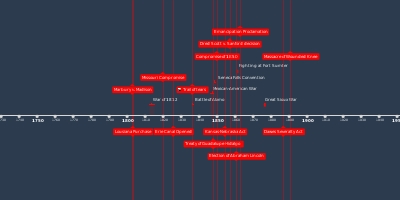Battle of Little Bighorn (25 jun 1876 ano – 26 jun 1876 ano)
Descrição:
Key Event: The Battle of Little Bighorn is a key event because it is the most well-known victory the Native Americans had against the U.S. army.Defined: The battle was fought near the Little Bighorn River in Montana territory. The conflict was between Colonel Custer’s federal troops and the Lakota Sioux and Cheyenne warriors.
Custer’s forces were outnumbered by the Native Americans and he and his troop had died to the Native’s hands; Custer had 600 men while the Native Americans had 3000 people.
Described: When gold was discovered on Native American lands, Americans’ desire to relocate the Native Americans grew immensely. Hence, tribes were forced to move to reservations. However, the Lakota Sioux and Cheyenne tribes had missed the deadline to move, so Custer was assigned to remove them forcefully.
Short Term: Before the battle, the American public agreed that Native Americans should have the right to negotiate for their lands. However, after witnessing the deaths of 200 U.S. soldiers, the public opinion quickly changed; the results of the battle enraged many white Americans, and their belief that the Native Americans were wild and bloodthirsty was proven in the event.
Long Term: The government’s response to the event included the increase of efforts to subdue the Native Americans. The battle was used as an excuse to ignore previous treaties, and violent measures were taken to confine the Sioux and Cheyenne into reservations within the next 5 years after the battle.
Adicionado na linha do tempo:
Data:
25 jun 1876 ano
26 jun 1876 ano
~ 24 hours
